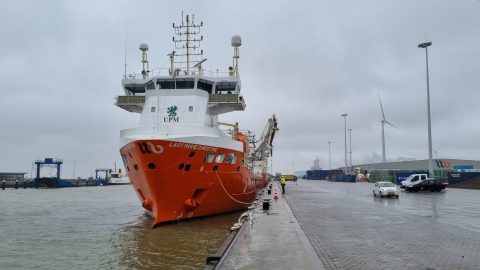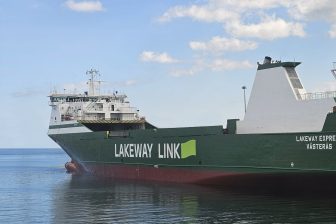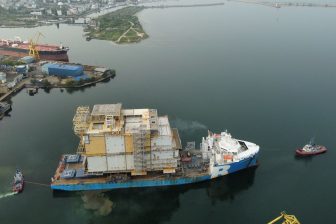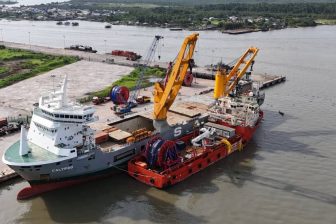
Up to 40 pct of global carbon-neutral fuels production in 2030 needed by shipping
On its path to decarbonisation, the shipping industry is looking at a major share of the future production capacity of carbon-neutral fuels. According to the latest Maritime Forecast to 2050 issued by the DNV, shipping will need 30 to 40 per cent of the total expected world supply of carbon-neutral fuels in 2030.
“That will be sufficient to cover the annual demand from the industry,” DNV said. However, shipping will also have to compete with aviation, road transport and other industries, meaning the production of carbon-neutral fuel alternatives will have to pick up the pace if the emission-reduction goals are to be met.
The target for shipping industry decarbonization can be achieved by combining various measures. Reducing speed and implementing a wide range of energy-efficiency measures will reduce energy needs, but the final step will rely on carbon-neutral fuel.
The current state of carbon-neutral fuels
DSV estimates, based on the IMO and IEA’s data on fuel consumption, that the shipping industry currently consumes about 280 Mtoe of fuel annually.
For 2021, the reported fuel oil consumption for ships of 5,000 gross tonnage (GT) or more in international trade was 209 Mtoe according to (IMO, 2022). Almost all (99.9 per cent) the fuel that was reported was either heavy fuel oil (HFO), light fuel oil (LFO), marine gas oil (MGO) or liquefied natural gas (LNG). Beyond the fuel consumption reported by the IMO (2022) for ships above 5,000 GT, there is an additional amount consumed by ships of less than 5,000 GT.
The total bunker volume sold to ships in international trade was 213 Mtoe in 2019, according to sales figures from IEA. In addition to ships in international trade, there is also fuel consumption by the domestic and fishing fleet, reported by IEA as a further 57 Mtoe in 2019 (IEA, 2019).
LNG consumption rose from 12.0 Mtoe in 2019 to 14.5 Mtoe in 2021 (IMO, 2022), and LNG comprises about 7 per cent of the total fuel consumption in 2021 for ships above 5,000 GT. However, more than 95 per cent of the LNG consumption is boil-off from the cargo on gas carriers and therefore not bunkered as fuel.
Among carbon-neutral fuels, biofuel is the most widely used in shipping today and is often used as a blend-in with fossil fuels. Biofuels can be blended in with a variety of different marine fuels, such as MGO, marine diesel oil (MDO), high sulphur fuel oil (HSFO), very low sulphur fuel oil (VLSFO), and so on. The typical blending ratio of biofuel is currently in the range 20 per cent to 30 per cent but is also available as 100 per cent biofuel.
The bio-blended fuels represent an available decarbonization option, as it is possible to use the infrastructure in the same way as for conventional marine bunkering fuel today. Additionally, biofuels already have an established infrastructure due to their use in multiple sectors (IRENA, 2021). For example, Port of Rotterdam sold more than 500,000 tons of bio-blended fuels in 2022 and Port of Singapore reported a sale of 140,000 tons bio-blended fuel, distributed over 90 bunkering operations. Overall, the sales of bio-blended fuels increased by more than 70 per cent between 2021 and 2022, DNV said.
Demand for carbon-neutral fuels
Demand for carbon-neutral fuels in shipping will be driven by GHG regulations and policies such as carbon pricing, expectations of cargo owners and consumers, and access to investors and capital. The demand for carbon-neutral fuels is therefore strongly dependent on global, regional, and national regulations.
To meet defined regulatory requirements, shipping companies will seek the most economically favourable GHG emission-reduction measure at any given time. It is therefore assumed that a combination of speed reduction and energy-efficiency initiatives will ensure individual vessel compliance in the short term.
In a DNV simulated scenario, shipping will require about 17 Mtoe of carbon-neutral fuels in 2030.
You just read one of our premium articles free of charge
Register now to keep reading premium articles.




